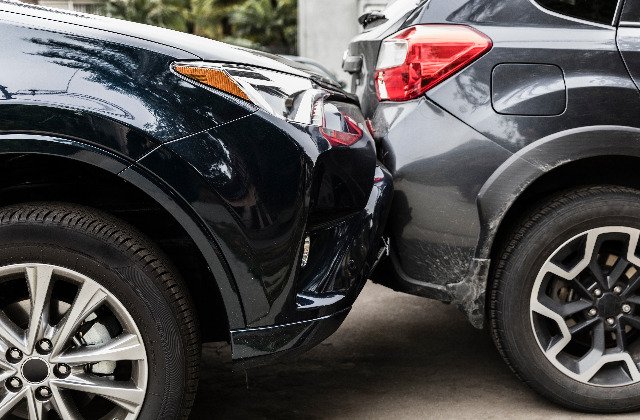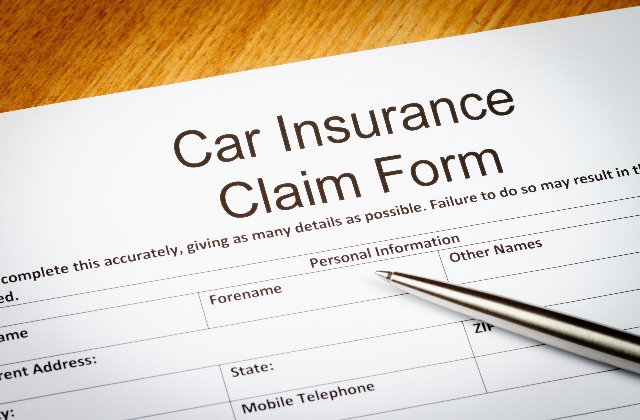
After painstakingly researching their car purchases or leases, many consumers just call their car insurer and pay whatever they’re asked to pay. With some research into the coverages you need and the discounts you can get, saving money is easy. Many factors go into setting the price of insurance premiums, from the types of policies you purchase to the model of car you drive, where you live, and the multitude of discounts you can take advantage of.
The goal of this guide is to help you learn about the factors that go into setting car insurance rates and the strategies you can use to get the best deal. Fortunately, you can do most of the research online from the comfort of your couch. We’ll cover the following topics in detail:
- You Gotta Shop Around
- Make Sure You Get the Discounts You’re Entitled To
- Keep Your Low Rates Low
- Get a Higher Deductible
- Consider Pay-Per-Mile Insurance
- Let Your Insurance Company Track You
- Don’t Pay for Coverage You Don’t Need
- Pay Your Bill in Full
- Consider Insurance Costs Before You Choose a Car
- Get a Short Loan and Make a Big Down Payment
- Don’t Always Make a Claim
- Update Your Policy Annually
1) YOU GOTTA SHOP AROUND
When buying a car insurance policy, one of the best ways to save a boatload of money is to get prices from multiple insurance companies before you commit to buying. While it’s easy to just go with the insurance company you (or even your parents) have had forever, they may not offer you the best price or potential discounts.
Once you know the coverage levels required by your state and your lender or leasing company, comparing insurance premiums online is easy. U.S. News partner QuoteWizard can streamline the process even more by searching multiple insurers for policies that meet your needs.
2) MAKE SURE YOU GET THE DISCOUNTS YOU’RE ENTITLED TO
Car insurance companies offer a wide variety of discounts, whether you’re a new driver or you have been behind the wheel for decades. Some will be automatically included when you get an insurance quote, while others will require you to ask your insurance company or agent to find out if you qualify.
Insurance is a realm where it is legal to charge different groups different premiums and offer varying discounts, so long as those groups are not protected classes and the insurance company can show a link between the rates they’re charging and the risk they face.
BUNDLE THOSE COVERAGES
A simple way to save some cash when buying auto insurance is to bundle your coverage with your homeowners or renters insurance policy and any other car insurance policies you have. In many cases, you can save 10 percent or more on all of your policies when you bundle your auto and home insurance policies together. In households with more than one driver, placing all drivers and vehicles into a multi-policy package of coverage can save you even more.
Of course, for bundling to work, each of the car and home insurance policies has to meet your needs and budget. It won’t save you in the long run if one of the components of the bundle does not provide the coverage you need at the right price. In some cases, other policies, such as life insurance, can also be part of the bundle.
TELL YOUR INSURANCE COMPANY WHERE YOU WORK
Some companies offer discounted insurance rates to customers with different jobs. First responders, for example, may qualify for insurance discounts. It’s important to tell your insurer what you do for a living and ask for a discount, as they might not think to check for such a deal.
PREFERRED PARKING

Some insurance companies offer discounts if you park your vehicle in a residential driveway, garage, or another secured facility. That’s especially true if your zip code is in a major urban area. The more secure your overnight parking, the less likely your car is to be broken into, stripped, or stolen. That, in turn, can lower the cost of your comprehensive coverage.
LOOK FOR AFFINITY DISCOUNTS
Affinity-based car insurance discounts are reserved for those customers who are members or customers of an organization, such as AAA, a fraternal organization, or even carry a particular credit card. Other organizations that frequently offer affinity discounts include college alumni organizations, professional trade associations, and financial institutions such as credit unions.
You’ll need to ask your insurance agent, car insurance company, or the organization promoting the discount how you can take advantage of the offer.
GO TO SCHOOL
When you’re just starting your life behind the wheel, many insurers offer discounts if you take driver’s education classroom instruction and behind-the-wheel driver training. They feel that the more education you have before you start driving solo, the more likely you’ll remain accident-free.
However, driver’s education isn’t just for teens. Many insurers offer discounts for older drivers who take classes to keep their driving skills sharp. They hope that by showing older drivers how their driving abilities change with age, they’ll have fewer at-fault accidents. Check with your local AAA affiliate or AARP to find a class in your area.
Depending on the insurance company, drivers may be able to get a discount for taking a car control or defensive driving course from a performance driving school, such as those found at motorsports facilities.
GOOD GRADES MATTER
Car insurance companies can show a link between kids who get good grades and fewer at-fault collisions. That allows them to offer lower premiums when teen drivers can prove they’re doing well in school. Most insurers consider a “B” average or higher the threshold for good grades. They’ll typically ask for periodic report cards or other documentation from the school to verify academic performance.
3) KEEP YOUR LOW RATES LOW
Once you have car insurance, there are many ways to keep your policy premiums as low as possible. Some are obvious – like driving safely – while others are less so.
DRIVE SAFELY

The fastest route to more expensive car insurance is to have a history of accidents and traffic tickets. They’re a red flag to insurers, as there’s a direct connection from your driving history to your chances of getting into a future collision. Car insurance rates for drivers considered low-risk are much lower than those for drivers that insurers determine are high-risk.
If you get a ticket, and it’s the first you’ve received in a few years, many communities will offer a chance to go to traffic school. Doing so will keep the ticket off your driving record, which can save you money on your car insurance.
LOCATION, LOCATION, LOCATION
If you move to a different state, or even a different zip code, you’ll want to check with your car insurance company to see if you can get a better deal. Insurance companies base rates on the zip code where you live. Some areas have higher cost claims histories than other regions, and those differences are reflected in the cost to insure a vehicle.
ACCURATELY PREDICT YOUR MILEAGE
It is important to track the number of miles you drive carefully. If a change in job, commute, or other factors lower the distance you drive, you’ll want to report it to your car insurer. The less you drive, the lower the chances you’ll have an accident, so low-mileage vehicles cost less to insure than those that are used for commuting long distances each day.
Some companies offer low-mileage discounts on cars that are only driven occasionally. Those discounts are great for seniors who drive very few miles each year.
LET YOUR INSURANCE COMPANY KNOW ABOUT LIFE CHANGES
It’s important to let your insurance company know about changes in your life, though some may result in premium increases, rather than decreases. Making sure your insurer knows about marriages, kids, divorces, new cars, and children who have moved away to college can change how your insurance is priced.
On the flip side, failing to let your auto insurance company know about life events could cause them to cancel your policy. Replacing a policy with a cancellation on your record can be an expensive challenge.
KEEP YOUR CREDIT SCORE HIGH
Many consumers don’t realize that their credit scores play a significant role in the price of their auto insurance. Because insurance providers can show a link between claims and credit scores, they’re allowed to use credit-based pricing in most states.
By paying your bills, car payments, and rent or mortgage on time each month, you can ensure your score stays high. Missing payments is the quickest way to a lower credit score and higher insurance costs.
4) GET A HIGHER DEDUCTIBLE
One of the easiest ways to reduce the price of car insurance is to increase your deductible to the highest level you’re comfortable with. Auto insurance pricing is based on risk. The more of the risk you’re willing to take on yourself with higher deductibles, the lower your insurance rates will be.

Before you raise your deductibles, however, you need to look at your ability to absorb the cost if you are involved in a collision. If, for example, you are able to pay $1,000 out of pocket without financial calamity, you can save a significant amount of money in premium costs by raising your collision coverage deductible to $1,000.
Before you start raising your auto insurance deductibles, it is essential to look at both your state DMV insurance requirements and those of your lender or leasing company. Most auto loan and lease contracts come with specifically required deductibles and coverage limits.
5) CONSIDER PAY-PER-MILE INSURANCE
If you don’t drive very much, one way to save money on your auto insurance is to move to a pay-per-mile or usage-based insurance policy. With usage-based coverage, you generally pay a base rate and then a small fee for each mile you drive. Typically the insurance company will give you a small device (called a telematics device) that plugs into your car’s OBD II port to track your mileage.
Pay-per-mile coverage only makes sense if you drive a limited amount of miles per year. If you drive a lot, the fees on a pay-as-you-go policy can get quite expensive. Some companies cap the maximum daily charge, so if you take a long road trip, you aren’t excessively penalized.
6) LET YOUR INSURANCE COMPANY TRACK YOU
One of the newest ways to save money on car insurance is to let your insurer track your time behind the wheel. Using a telematics device that plugs into the OBD II port under your dashboard, they can track when you drive, how far you drive, and your driving habits. If you accelerate aggressively, brake hard, or trigger advanced safety systems, such as stability control or automatic emergency braking, your insurer will know. They’ll base their assessment about your risk on how they see you driving.
While items like traffic tickets and collisions can take months to be reflected on your driving record, your insurer can see changes in your driving habits as soon as the information is uploaded from their tracking device.
If you’re a great driver, letting your insurer track your driving can lower your car insurance costs. On the other hand, if you treat the road as a racetrack, having a tracker in your car is a monumentally bad idea.
7) DON’T PAY FOR COVERAGE YOU DON’T NEED

It may sound obvious, but many consumers pay for car insurance products and add-ons they don’t need. If, for example, you have roadside assistance from AAA, you shouldn’t pay for that coverage a second time with your insurance company.
Another coverage that’s easy to keep paying for after you no longer need it is gap insurance. Gap coverage ensures that you are able to pay off your loan or lease if you’re a victim of auto theft or your car is declared a total loss. If you have reached a position of positive equity on your car loan, or the amount you have left to pay on your loan or lease is small, you can save money by dropping your gap insurance. Note, however, that some leasing companies require gap coverage to be in place for the duration of the lease.
You can learn more about gap coverage in our guide to gap insurance.
DON’T OVER-INSURE AN OLD CAR
As cars age, their value almost always declines. At some point in a car’s life, buying collision and comprehensive insurance is no longer worth the expense. It’s especially true if you have high deductibles on those coverages and still pay a hefty amount in premiums. If your vehicle’s value has declined to the point where you could replace it out-of-pocket without too much financial stress, you should consider removing the comprehensive and collision coverage from your policy.
Of course, everyone’s risk-tolerance level is different. If it would stress you out to completely remove the coverages, look for a balance of cost and deductible you could feel comfortable with.
Stop overpaying for car insurance!
8) PAY YOUR BILL IN FULL
Most car insurance bills come with the option of paying the entire balance at once or breaking the balance into a series of monthly payments. What’s left in the fine print is the fact that paying the bill over a period of months adds finance charges to each of the payments. Though they might only be a few dollars, over time the finance charges can add up. Paying the bill as a lump sum eliminates any possible finance charges. Most people in USA don’t realize they are paying too much for car insurance
Another way policyholders can save a few bucks is to charge their premiums on a credit card that has cash back rewards, and then pay off the balance before any interest is charged. If you don’t pay off the credit card balance in the month you make the charge, the credit card interest will negate any advantage of using the rewards card.
9) CONSIDER INSURANCE COSTS BEFORE YOU CHOOSE A CAR
Most consumers only consider the cost of car insurance after they’ve purchased or leased a new vehicle. It’s a better idea to think about car insurance much earlier in the auto buying process. Different cars cost vastly different amounts to insure. Some of the differences are based on horsepower, included safety equipment, and historical cost to repair.

You probably won’t get discounts for anti-lock brakes or anti-theft devices, as most cars today have them, but you may see a discount for multiple airbags and other safety systems. Advanced safety technology, such as automatic emergency braking, may qualify you for future discounts, but they haven’t been around long enough for auto insurers to consider them effective in reducing claims.
The only way to get a precise insurance quote on a new car is to provide a vehicle identification number (VIN). The VIN allows an insurer to see the exact equipment that’s on the vehicle. Save up to 54% on car insurance
10) GET A SHORT LOAN AND MAKE A BIG DOWN PAYMENT
Another way to save money your auto insurance for a new car is to make a sizeable down payment and keep your car loan as short as possible. Doing so keeps your loan to value (LTV) ratio low, and let’s you avoid the need to purchase gap insurance.
When your LTV is 100 percent, your car insurance company will likely be able to pay back your entire auto loan if your car is stolen or declared a total loss. If it’s higher than 100 percent, you’ll have some cash to put toward a down payment on a replacement car.
Our article on why long-term auto loans are a terrible idea illustrates many other reasons why they should be avoided.
11) DON’T ALWAYS MAKE A CLAIM
If your vehicle is damaged in a collision or other mishap, your first inclination may be to call your insurance company. When the damage is severe, or there are injuries stemming from the incident, it’s critical that your insurance company is one of the first calls you make.
When the damage is minor and doesn’t include anyone else’s property, it’s a good idea to visit a body shop and get an estimate before you contact your insurance company. The estimate may be below or close enough to your deductible that it’s not worth filing a claim and risking a hike in your premiums. In this situation, it’s best not to contact your insurance company until you are sure you want to file a claim. With some insurers, merely calling your agent and asking for advice about filing a claim counts as an accident on your driving record.
12) UPDATE YOUR POLICY ANNUALLY
When you ask many consumers why they have insurance with a specific company, the answer you’re likely to hear is “that’s the company I’ve always had.” While you can get significant discounts by staying with one insurer, blindly doing so exposes you to paying more than you should.

Instead, it’s a great idea to look for quotes from other insurers every year or two to ensure you’re getting a good deal. Online tools, such as U.S. News partner QuoteWizard make the process of getting auto insurance quotes quick and easy.
At the very least, you should talk to your agent or insurance company every year to let them know if your circumstances have changed and find out whether they’re offering any discounts or promotions you can take advantage of. If you have found better prices at another company, offer them the chance to meet or beat the competition with a policy that includes similar coverages.

